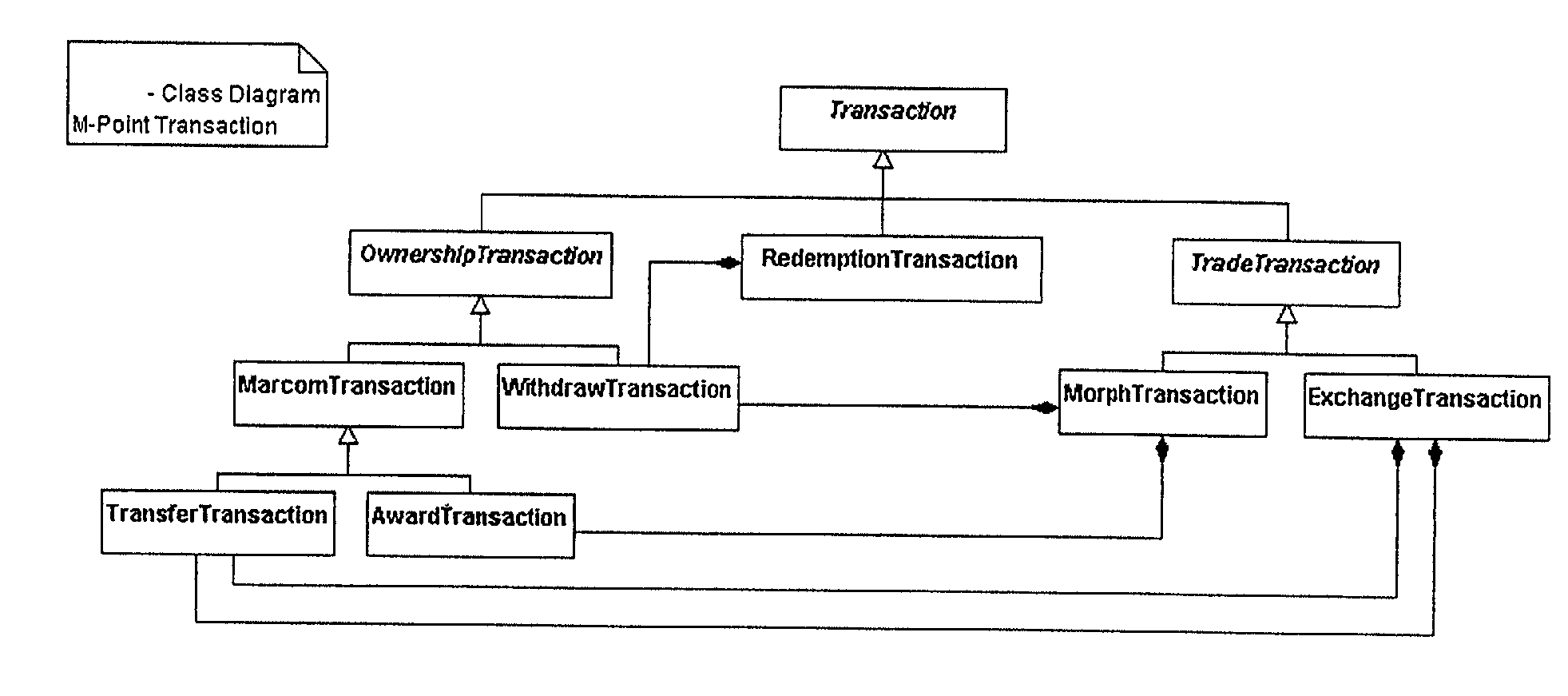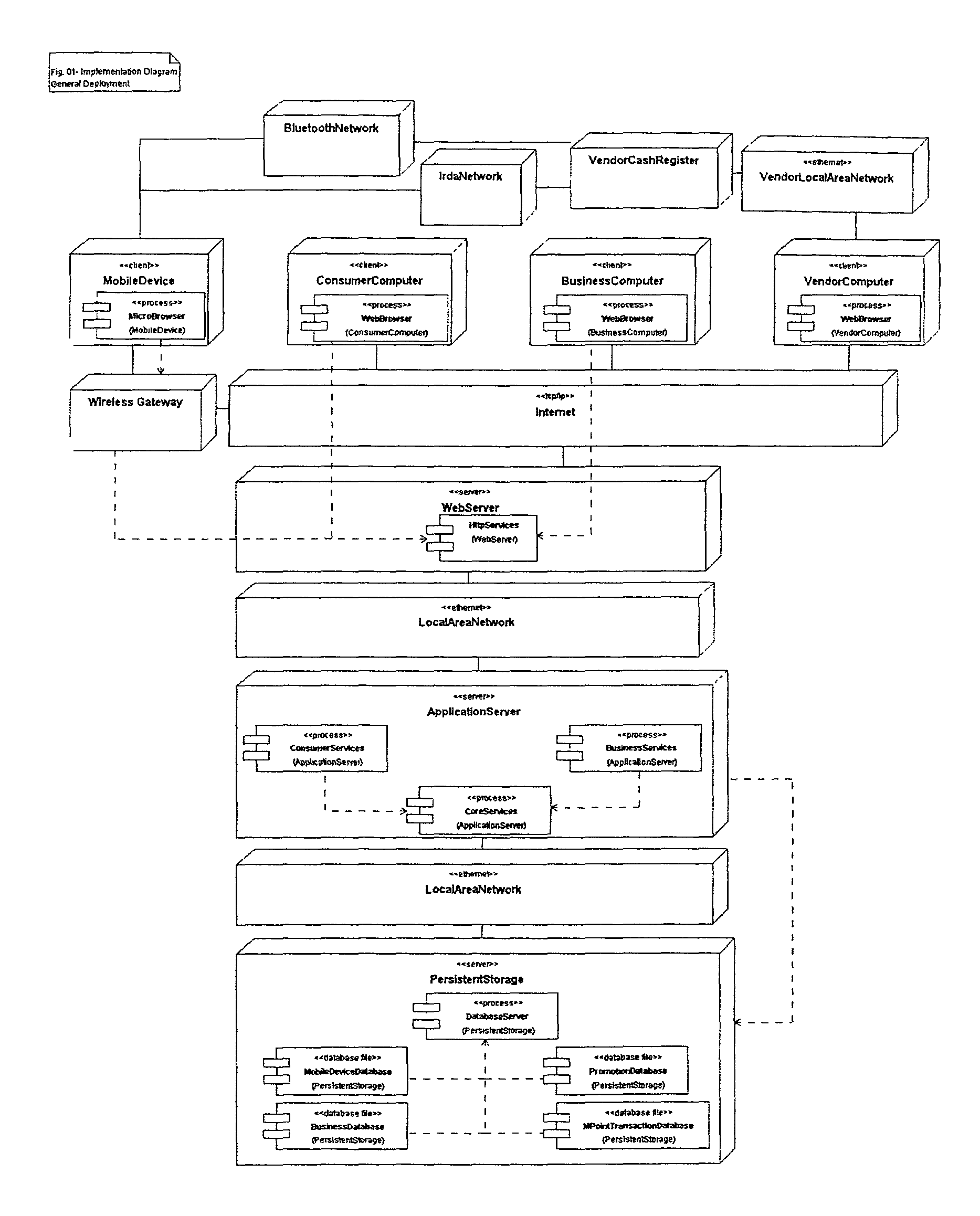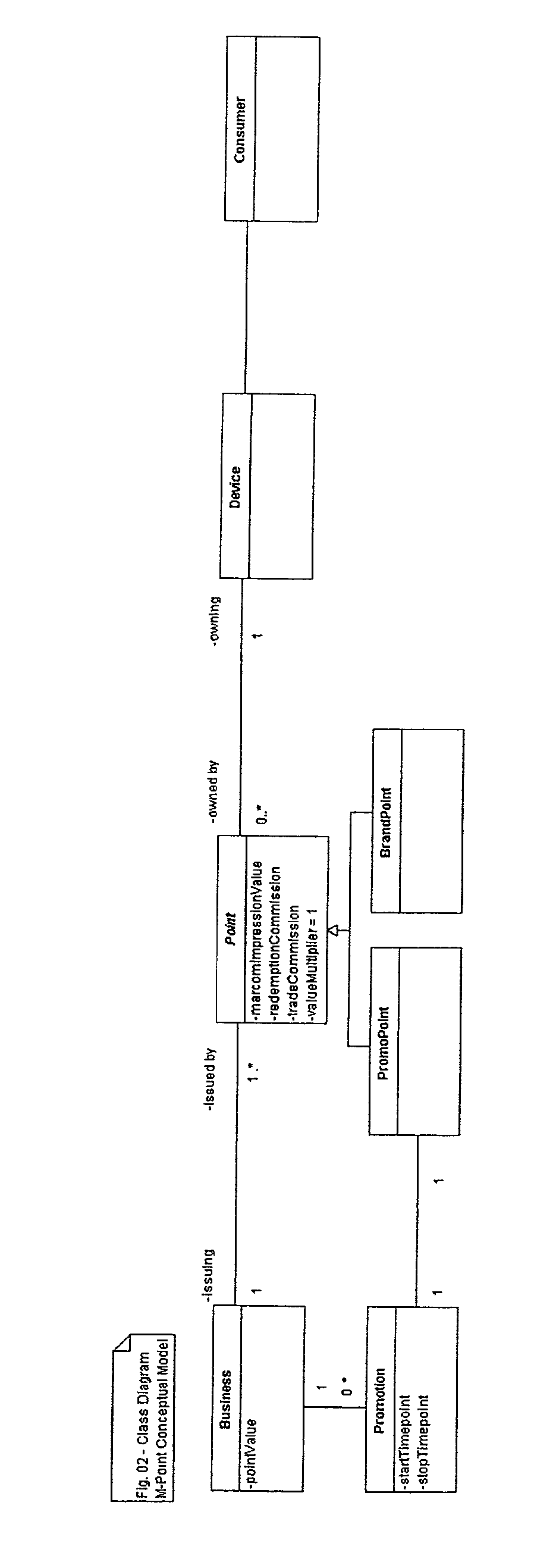Computer system and method for the establishment of a virtual marketplace of promotional values
a technology of promotional value and computer system, applied in commerce, special data processing applications, instruments, etc., can solve the problems of inability to expect users to operate as if they were using the "traditional" wire-line internet, inability to navigate and browse, and inability to achieve co-/cross-marketing in practi
- Summary
- Abstract
- Description
- Claims
- Application Information
AI Technical Summary
Problems solved by technology
Method used
Image
Examples
Embodiment Construction
[0523] At the end of T8, we can summarize the situation with the following six tables:
25 Joe's Points Time K-Brand Z-Promo T1 +100 T3 -20 T4 -30 T5 -20 +30 T6 -20 +9 T7 -20 Balance +10 +19
[0524]
26 Ann's Points Time K-Brand Z-Promo T2 +50 T4 +30 T5 +20 -30 T8 -30 Balance +20 +20
[0525]
27 K-Food's Brand Points Time Point Marcom Morph Redeem T1 -100 +100 T3 +20 +20 T4 +30 T5 +20 T6 +20 -20@-10% T8 +30 +30 Balance -30 +150 -20 +50
[0526]
28 K-Food's Redeem Commissions Time Commission # Redemption Debit T3 1 0.80 T8 2 0.72 T8 3 0.40
[0527]
29 Z-Drink's Promo Points Time Point Marcom Morph Redeem T2 -50 +50 T5 +30 T6 -9 +9 +9@+50% T7 +20 +20 Balance -39 +89 +9 +20
[0528]
30 Z-Drinks Redeem Commissions Time Commission # Redemption Debit T7 1 2.70 T7 2 2.20
[0529] Some important considerations follow. While Ann was never awarded any K-Brand points directly, she nonetheless could take advantage of K-Food's offerings: because of the transfer (T2) and exchange (T5) transactions she gained ownership of...
PUM
 Login to View More
Login to View More Abstract
Description
Claims
Application Information
 Login to View More
Login to View More - R&D
- Intellectual Property
- Life Sciences
- Materials
- Tech Scout
- Unparalleled Data Quality
- Higher Quality Content
- 60% Fewer Hallucinations
Browse by: Latest US Patents, China's latest patents, Technical Efficacy Thesaurus, Application Domain, Technology Topic, Popular Technical Reports.
© 2025 PatSnap. All rights reserved.Legal|Privacy policy|Modern Slavery Act Transparency Statement|Sitemap|About US| Contact US: help@patsnap.com



